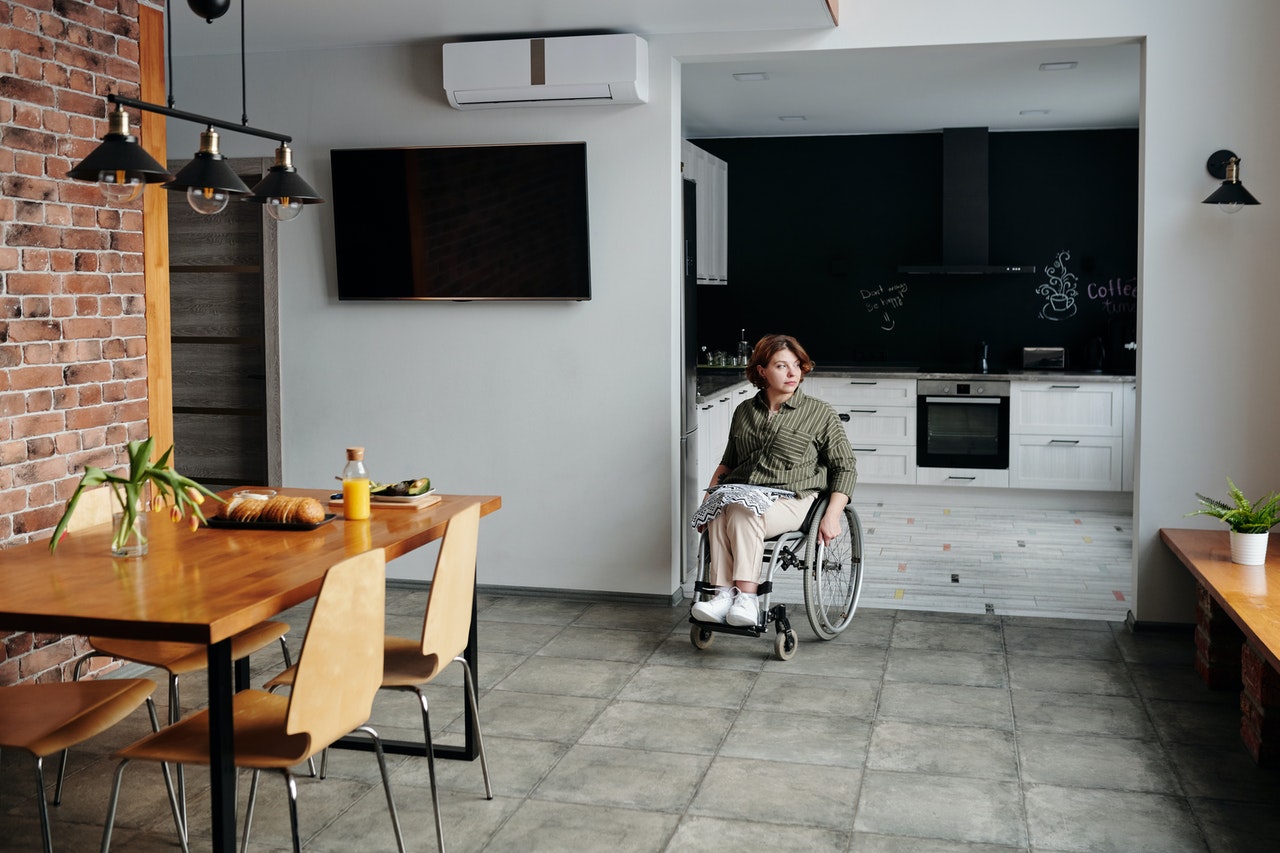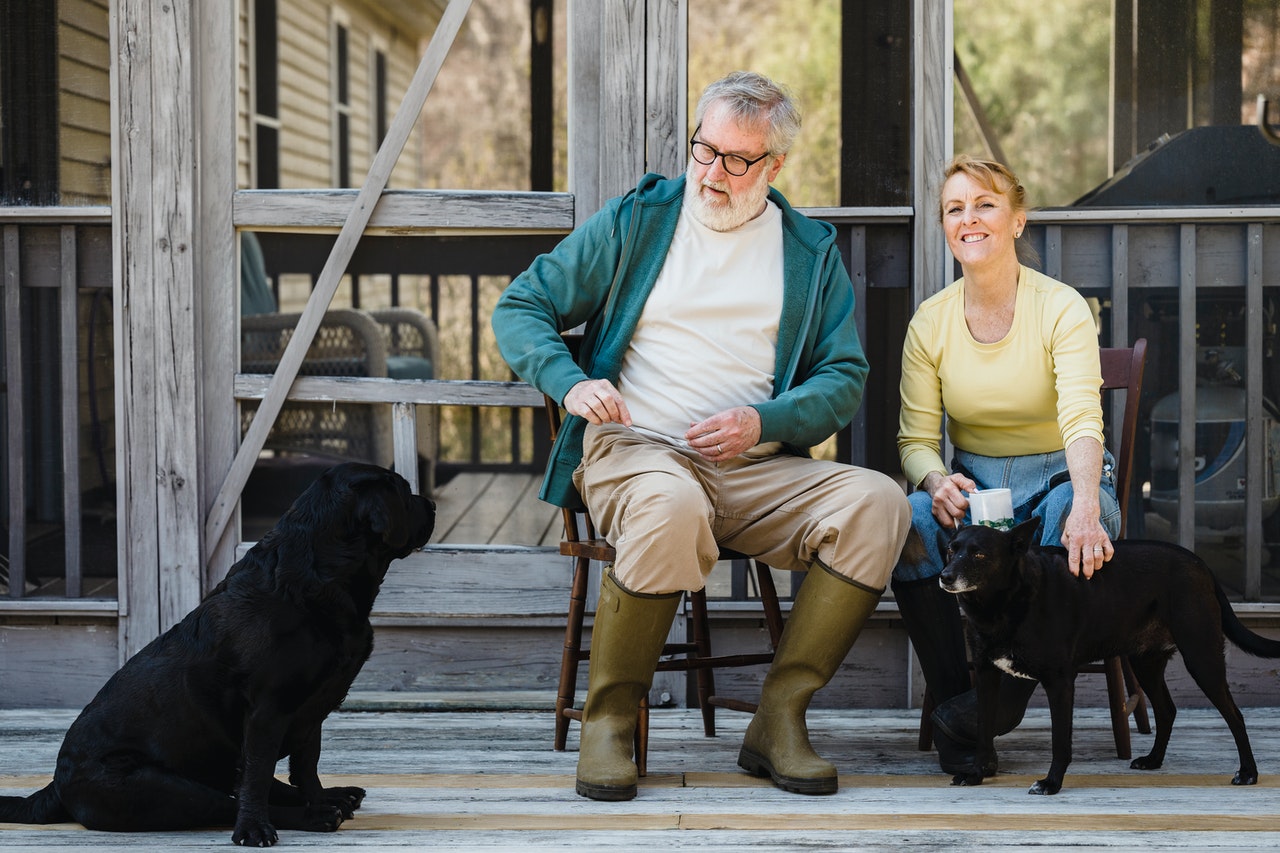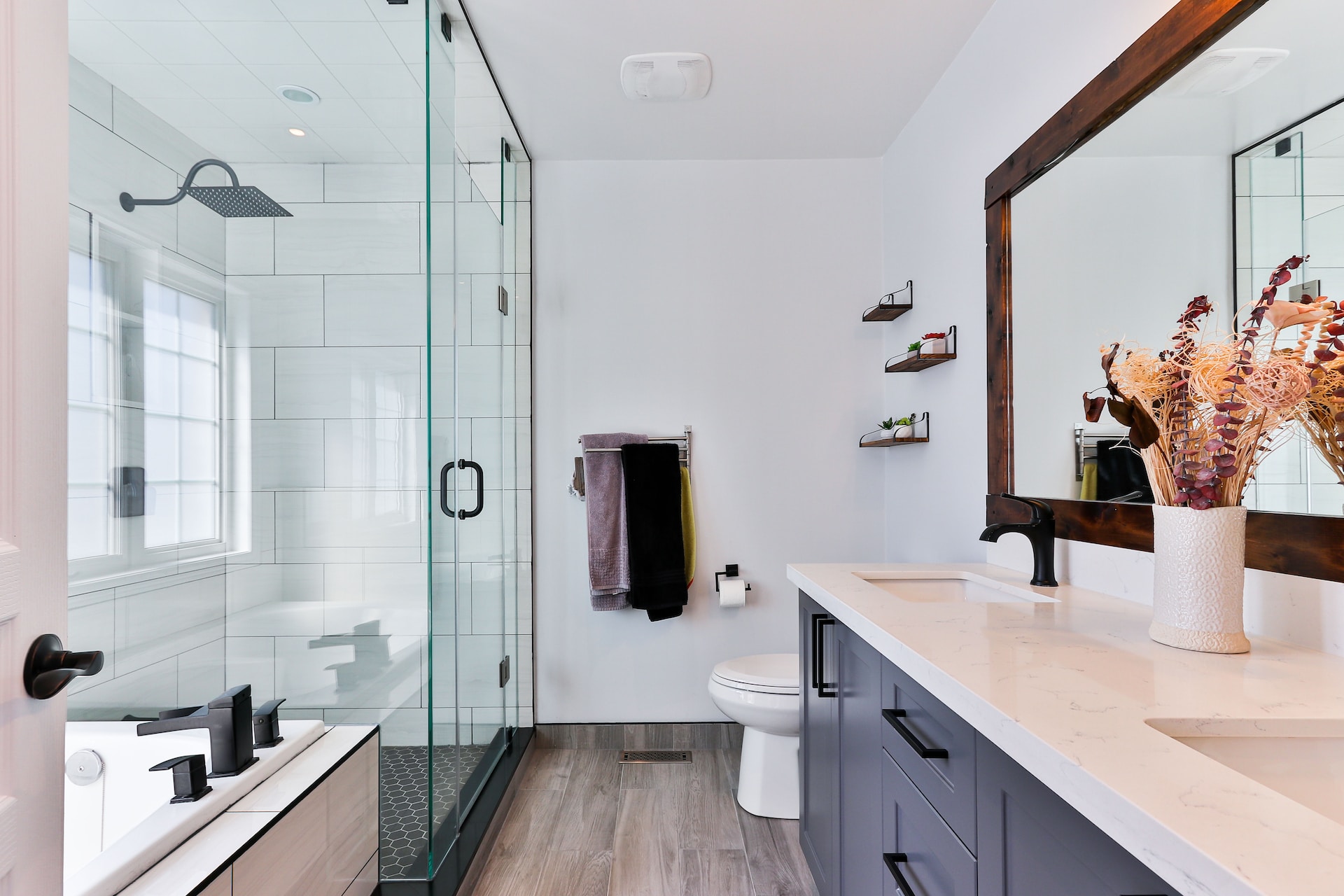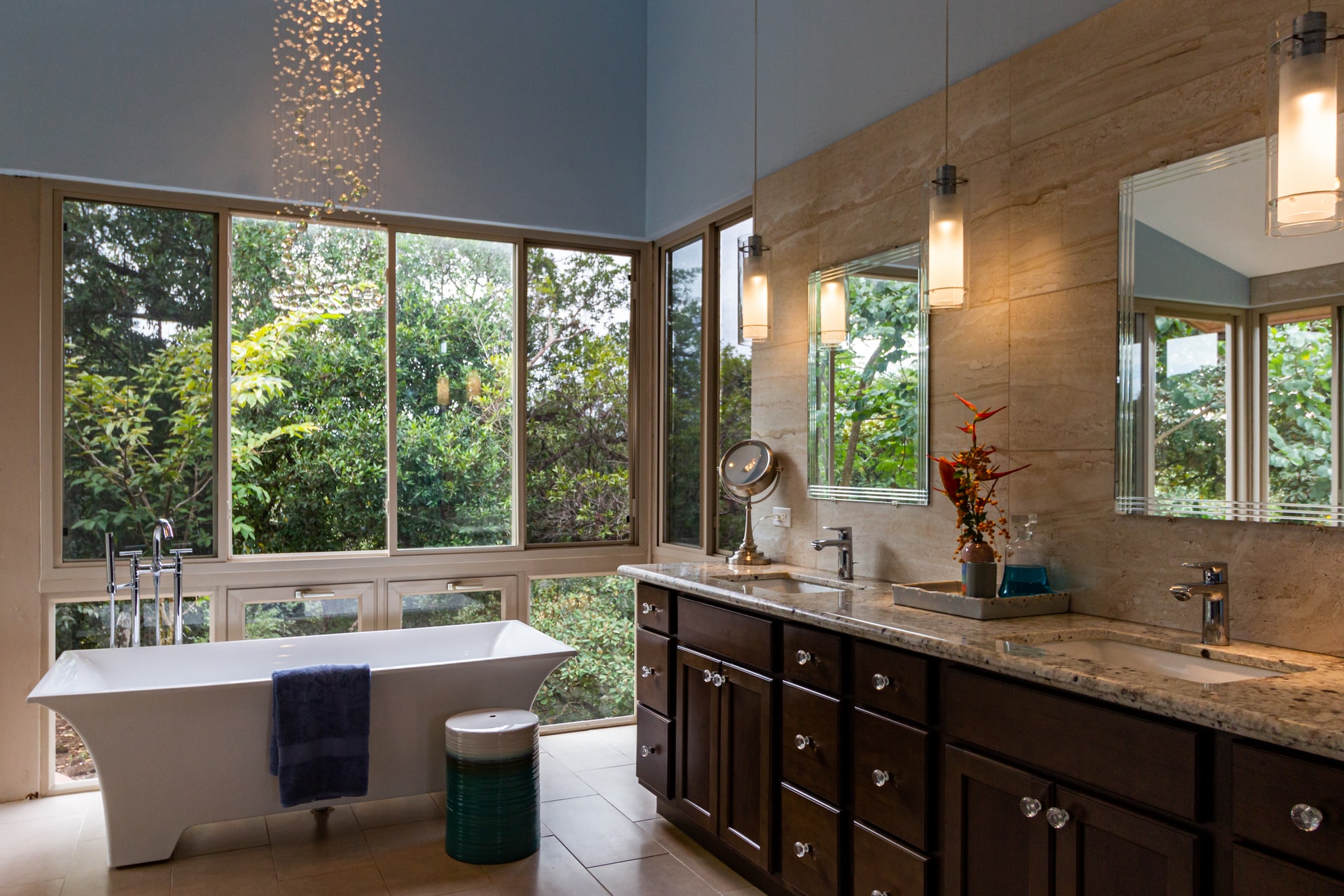Your home is your castle. A home is a place to relax — a space to take care of your needs, such as grooming, eating, and sleeping. A home is where you store your belongings and might even be where you work. You have set it up for ease of use, in whatever fashion that may be. But if you or someone in your family has a disability, your home may not be the comforting sanctuary it should be. It may be a series of obstacles and another source of stress.
There are a number of ways to adapt your home for the needs of your family. Different needs come with various adaptations, so we’ll look at several common needs and modifications for the home below.
Modifying Your Home to Support a Disability
Bathroom
The problem
Of all the rooms in your home, a bathroom is one of the major safety hazards for people whose movement is impacted by a disability or by age. Showering and using the toilet are both activities that require balance and coordination (stepping in and out of a tub, raising and lowering from a seated position). Humidity and puddled water can make these activities even more hazardous.
Potential fixes
Bathrooms can be made more accessible by adding features that reduce strain on the body and offer stability for these activities. That includes
- Installing grab bars near the toilet
- Installing grab bars in the shower
- Adding slip-resistant mats to the shower floor
- Using a shower chair or stool for bathing
- If it’s financially possible, swap a step-in tub for a low or zero curb shower to greatly reduce instability
- Consider swapping traditional sink faucets for touchless models that require less movement to turn on and off
- Check the home’s hot water temperature and make sure it’s within normal range. This can help avoid scalding and burning, and reduce the frequency with which you have to jerk to turn a hot water tap down.
Walkways, Stairs, and Doorways
The problem
For folks with limited mobility and balance and for those who use a wheelchair or walker, standard walkways have obstacles that can be hazardous. Stairways can be difficult or impossible to maneuver for those with specific conditions.
Potential fixes
Focus on widening or removing obstacles from walkways, especially those on the ground floor. For stairwells, there are accessibility options depending on the needs of the individual.
- Add, replace, or reinforce stairwell handrails. Handrails can greatly increase stability if you’re uneven on your feet, and people who use walkers can use them in conjunction with handrails. Ask your contractor or handyman to help ensure that these are ADA compliant, which will affect the height and clearance of what you install.
- If it’s financially possible, consider installing a chair lift if you or a loved one are not stable on your feet. Chair lifts transport you from the top of the stairs to the bottom or vice-versa. If you or someone you live with uses a wheelchair, you must be able to independently get in and out of it to use a chair lift, and you’ll need multiple wheelchairs for use on each floor.
- For doorways you often use, consider extending the opening from a standard 32 inches to 48 for better clearance. This can better accommodate a wheelchair or walker or simply provide a bit more room for those who are less stable on their feet.
- For small staircases, you may choose to remodel them into ramps. Prepackaged accessibility ramps can be installed within a few hours, but a more sturdy and permanent ramp may be a multi-day project that requires a contractor.
- Replace old flooring for non-slip materials. If your old carpeting is bunching or worn, this can create a fall risk.
- Tack down or use non-slip backing on area rugs and mats to prevent trips.
Kitchen
The problem
If you or a loved one has a disability, safety is key in the kitchen. One major goal will be to keep commonly used items in highly accessible areas, while another is to reduce kitchen hazards.
Potential fixes
Focus on widening or removing obstacles from walkways, especially those on the ground floor. For stairwells, there are accessibility options depending on the needs of the individual.
- Consider lowering your countertop height if you use a wheelchair or mobility device. This way, you have more usable workspace in the kitchen and aren’t reaching up to use knives and other tools. ADA compliant countertops are at least 36 inches long and no higher than 36 inches from the floor.
- Store the most commonly used kitchen items in drawers and shelves that are at arm height. Consider roll-out drawers for your most convenient cupboards so they store more items and you don’t have to reach in to grab things.
- Consider using a smart home assistant in the kitchen to more easily do small tasks. This can reduce the effort needed to multitask, as smart homes can set timers, look up recipes, convert measurements, etc.
- Choose a stovetop that has temperature controls on the very front. This reduces risk by preventing you or a family member from having to reach over a hot burner to turn it off.
- The kitchen is another great spot to consider touchless faucets and other appliances that may take less force to operate than traditional models.
- When installing appliances, measure how they obstruct the kitchen walkway. If you or a loved one can’t safely navigate around an open dishwasher door, this could be a safety risk. Consider getting expert advice from a kitchen contractor to enhance the functionality of the kitchen space and make it fit your needs.
Bedroom
The problem
Cluttered, low-visibility bedrooms can become an obstacle or hazard for a variety of reasons to folks with disabilities.
Potential fixes
Focus on keeping the bedroom accessible and clear of clutter. Each person is different and has different needs, so making space is key.
- Aim for a 5×5 foot clear floor space near your side of the bed if you use a mobility device. This is adequate clearance for a wheelchair, walker, or for those who need a little extra room.
- Add grab bars onto the bed frame or nearby for assistance getting in and out of the bed if you’re uneven on your feet.
- Install anti-slip flooring near the bed if you currently have tile or hardwood
- Look for beds and frames that put you at standing height or level with a mobility device like a wheelchair or walker. Keeping heights level can help reduce the effort and hazard potential that can happen when getting in and out of bed.
Home Office
The problem
Fortunately, most home offices are designed to suit the user’s needs. There tend to be fewer “problems” in a home office that need modifying, and it’s more about choosing furniture and positioning that works best for you.
Potential fixes
Look for easy access to what will make you the most productive can help you thrive.
- Opt for height-adjustable desks that can accommodate mobility aids or adaptable seating. A sit-stand desk may be a good option and there are also desks made specifically for use with a wheelchair.
- Locate your desk near a light switch, and ensure the light switch has a dimmer. Adjustable lighting can help improve energy and productivity while working at home, so making sure it’s easy to access is key.
- Practice good cord organization to prevent trip and fall hazards.
- Consider a smart home device that uses voice recognition to place calls, set reminders, and book appointments.
Other Adaptive Considerations
Visibility, Lighting, and Acoustics
The problem
For those who have difficulty seeing or aging eyes, some design choices can cause hazards or alienation from the rest of the home. On the other hand, if you or a family member experience sensory sensitivity, lighting and sound may create discomfort or pain. This is particularly true of certain types of alarms and lights. For those who may be using a hearing device, extra sound in a room can also cause discomfort.
Potential fixes
Every person who is sensory sensitive is unique, so you may find it helpful to speak to an occupational therapist to find solutions catered to your needs. Here are some ideas you can try.
- Arrange furniture in circle or horseshoe formations so that no matter where in a room you sit, you or a loved one can see everyone else’s face. This can be useful for those hearing impaired.
- Consider swapping white light switch plates for black, which offer more contrast for those with difficulty seeing.
- Avoid patterned floor coverings, as they can cause confusion for those who may have difficulty seeing. Patterns can also trigger vertigo or depth perception issues for some folks.
- Swap fluorescent lights for LED or other alternatives
- Install dimmer switches to have more control over brightness levels in each room.
- Reduce visual clutter in rooms that you use frequently. This can be accomplished through an organization system that uses boxes and shelves to neatly store your belongings.
- For folks who are hard of hearing, consider adding security, door, or fire alarms that include a strobe light to ensure everyone gets the message in the event of an emergency.
- Install blackout curtains in bedrooms and other rest areas if you or a loved one are sensory sensitive. Darkness is important for sleep, and some disabilities can cause sleep to be more difficult.
- Move televisions to side rooms in the home and avoid keeping one in your family room. TV noise carries throughout the house and can cause auditory overload.
- Consider taking steps to deaden the sound in your bedroom or another area to create an auditory safe space. Soft surfaces often deaden sound, or you can hang acoustic foam on the walls if that’s within your budget.
- If you have a room with very high ceilings, they can cause distracting echoes. Consider lowering high ceilings or focusing on these rooms for sound deadening efforts.
Financial Help for Home Modifications
Modifying a home to support yourself or a loved one with a disability can be very expensive. It’s a good idea to scope out sources of financial support before you modify, if possible. Here’s how to start:
- Check Medicare part B or Medicaid. If you qualify for Medicare or Medicaid, you may have some coverage for smaller, less permanent accessibility products. Medicare part B offers some coverage for durable medical equipment like wheelchairs and lifts. It won’t cover large-scale modifications, but can be helpful. Medicaid benefits vary from state to state, and some states offer benefits to build ramps, modify rooms, and do a variety of accessibility improvements. Call your state’s office to learn more about possible benefits.
- Call your insurance company, local Area Agency on Aging (if applicable) and DSHS. While your insurance company won’t give you money just to be nice, you may find that they offer coverage for some of the modifications you plan, especially if they qualify as durable medical equipment. Your local Area Agency on Aging may have grant money available to offset some of your costs if you are an older adult. Finally, DSHS does provide some financial assistance in specific cases, so it’s a good idea to ask before ruling it out.
- Apply for specialized financial support like
- Explore state-specific resources. HomeMods.org does an excellent job of providing state-specific funding information for those who are modifying their home. Find your state’s funding details below
| State by State Home Modification Funding Opportunities | ||
| Alabama | Louisiana | Oklahoma |
| Alaska | Maine | Oregon |
| Arizona | Maryland | Pennsylvania |
| Arkansas | Massachusetts | Rhode Island |
| California | Michigan | South Carolina |
| Colorado | Minnesota | South Dakota |
| Connecticut | Mississippi | Tennessee |
| District of Colombia | Missouri | Texas |
| Delaware | Montana | Utah |
| Florida | Nebraska | Vermont |
| Georgia | Nevada | Virginia |
| Hawaii | New Hampshire | Washington |
| Idaho | New Jersey | West Virginia |
| Illinois | New Mexico | Wisconsin |
| Indiana | New York | Wyoming |
| Iowa | North Carolina | |
| Kansas | North Dakota | |
| Kentucky | Ohio | |
| Courtesy: HomeMods.org | ||
If you or a loved one in your household have specific needs, it’s essential to consider safety above all else. Beyond that, there are a wide variety of options within your home to improve it for others’ needs. Some you can implement immediately, and others may take more thought or planning. Doing so will make the home precisely that: a home. A castle for all those who live within to relax, play, learn, sleep, and live. That alone is worth every effort.




